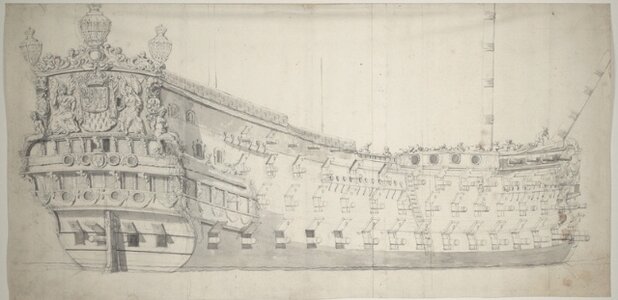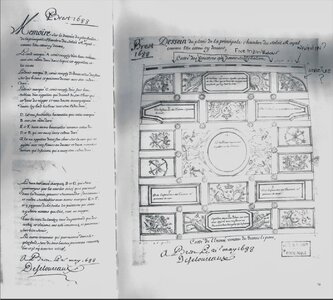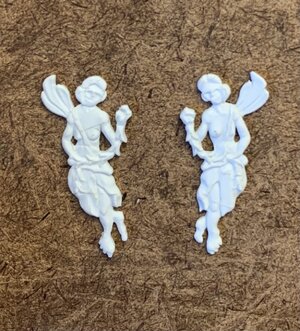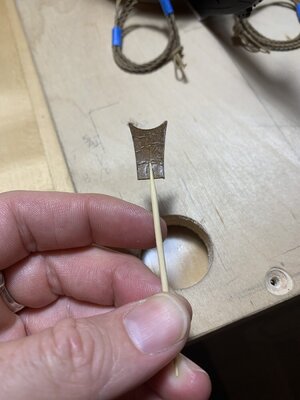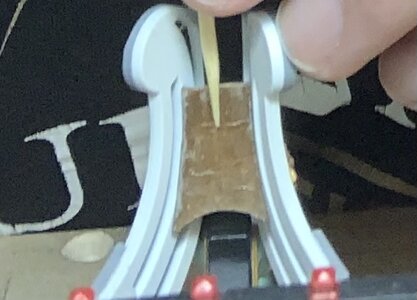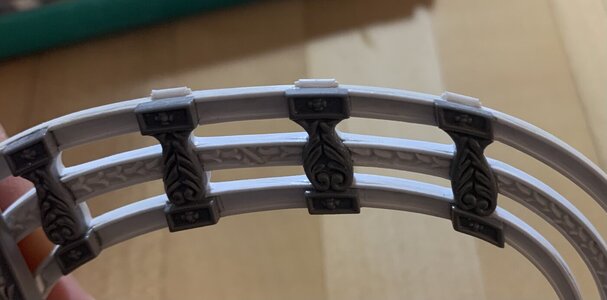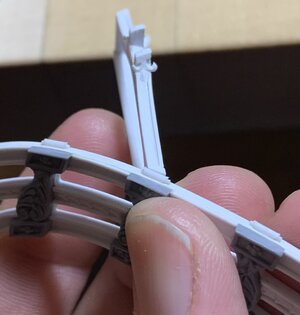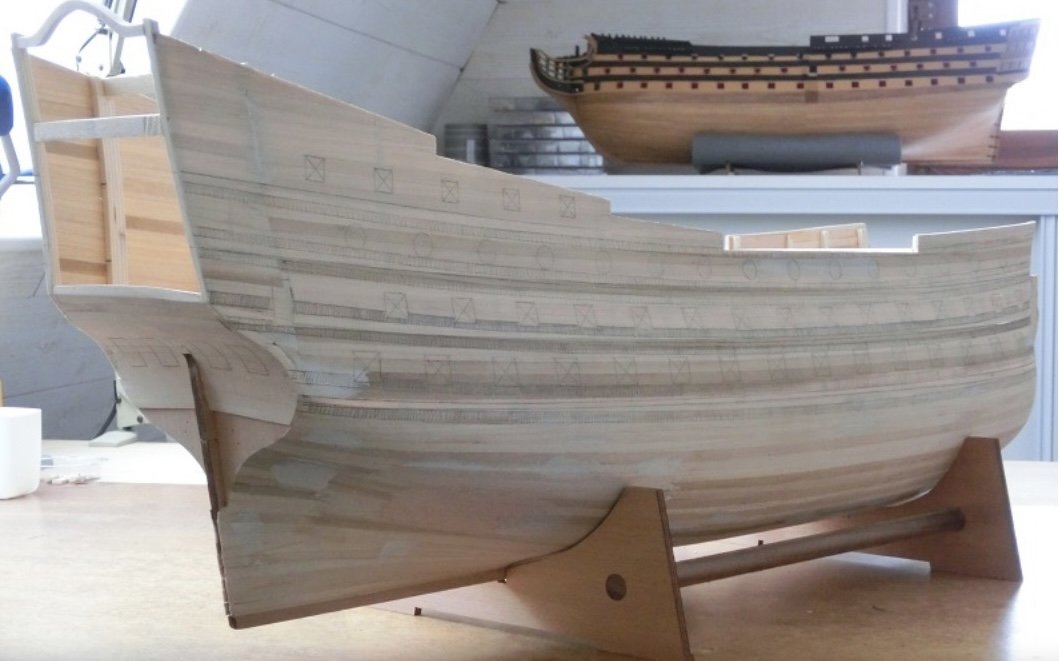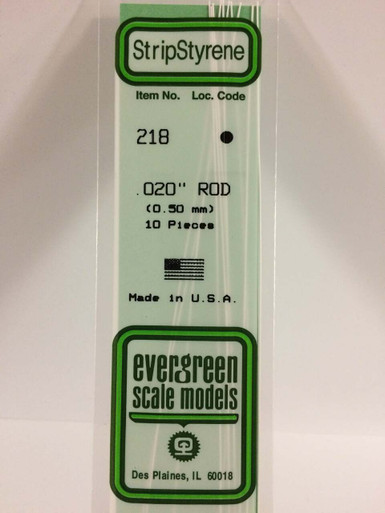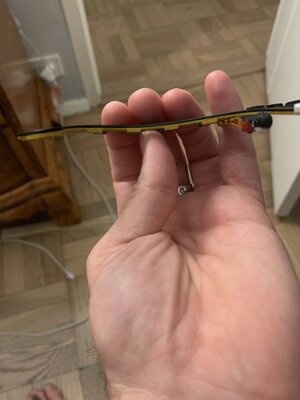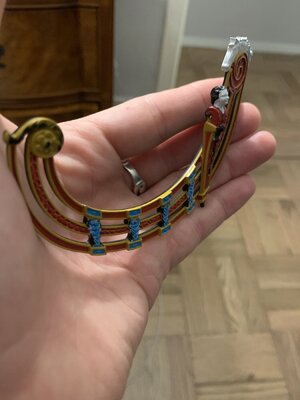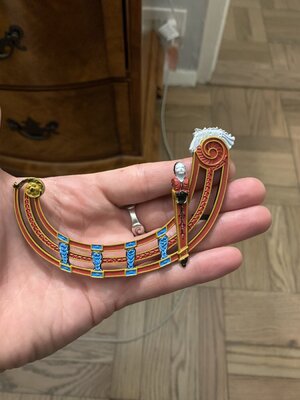Here are a few pics of the lower hull before painting:
View attachment 131376
Above, you can see the representational forward chase port that I engraved into the plastic. This port gives me 15 lower deck piercings, which actually corresponds with her re-build configuration on the lower deck.
View attachment 131375
View attachment 131377
You can see, above, that I had to shift the aft-most port on the lower deck forward 1/4”, in order to make room for the lower finishing of the quarter gallery.
View attachment 131378
View attachment 131369
View attachment 131368
And, after priming:
View attachment 131365
This overview shot gives a sense for the eventual broadening of beam.
View attachment 131367
You can still make out the stock, outboard hawse hole, which had to be filled after adding the stem extension pieces. The whole project hinged upon the success of these extensions, which did require some careful heat-bending and re-engraving. It was a relief when it all came together.
View attachment 131366
View attachment 131371
Now, a few images while working through Herbert Thomesan’s age and distress paint protocol:
View attachment 131373
View attachment 131372
View attachment 131374
View attachment 131380
View attachment 131381
View attachment 131382
View attachment 131383
Above, you can see the interior thickening of the gun ports that I added, from the outset, in an effort to give a sense of the frame depth of a real hull. I dislike the hollow appearance of plastic warship models because they do not convey any sense of hull thickness. Here the port depth thins as you rise from the lower to middle deck. My objective is always to reduce any impression of a plastic model; to that end, all flash is eliminated, injection mould craters are filled, and surfaces are appropriately textured.
People sometimes wonder about the surface sheen of my finish. It is actually not this shiny in person. I clear-coated everything with a matte spray, that mutes the sheen without robbing the surface of all of its depth.
More to follow; next, I will post assorted upgrades to the guns, their carriages and the port lids.
Thank you for looking in!





